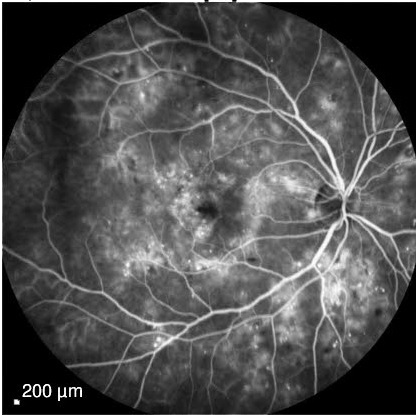
Diabetic Eye Disease
In a person with diabetes mellitus, the body does not use and store sugar properly. High levels of blood sugar levels may lead to damage of blood vessels including those within the retina. The retina, located in the back of the eye is a nerve layer responsible for sensing images to the brain.
When damage occurs to the vessels in the retina it is referred to as diabetic retinopathy. There are two types of diabetic retinophaty classified as nonproliferative diabetic retinopathy (NPDR), more commonly known as background diabetic retinopathy, and proliferative diabetic retinopathy (PDR). BDR is when normal blood vessels leak blood of fluid within the retina and is the earliest state diabetic retinopathy. PDR is the more severe type of diabetic retinopathy and is diagnosed by the presents of new abnormal blood vessels growing on the surface of the retina or optic nerve.

Diabetic Eye Disease Can Cause:
- Macular ederma: swelling of the macula, the area of the retina responsible for central vision
- Maculoar ischemia: closer of normal blood vessels causing growth of new abnormal vessels (neovascularization)
- Vitreous hemorrhage: bleeding of the new abnorminal vessels into the vitreous, the clear gel-like substance that fills the eye
- Tractional retinal detachment: scar tissue caused by neovascularization can pull, wrinkle, and shrink retina from normal positioning
- Neovascular glaucoma: abnormal blood vessel is growing in the iris(colored part of the eye), blocking the natural drainage channels in the front of the eye. This causes high pressure within the eye and can damage the optic nerve
Prevention
Clearwater,, FL 33756
Phone: 727-447-8008
Fax: 727-442-3467
Email: info@baretina.com








Clearwater, FL 33756
Phone: 727-447-8008
Fax: 727-442-3467
Email: info@baretina.com




